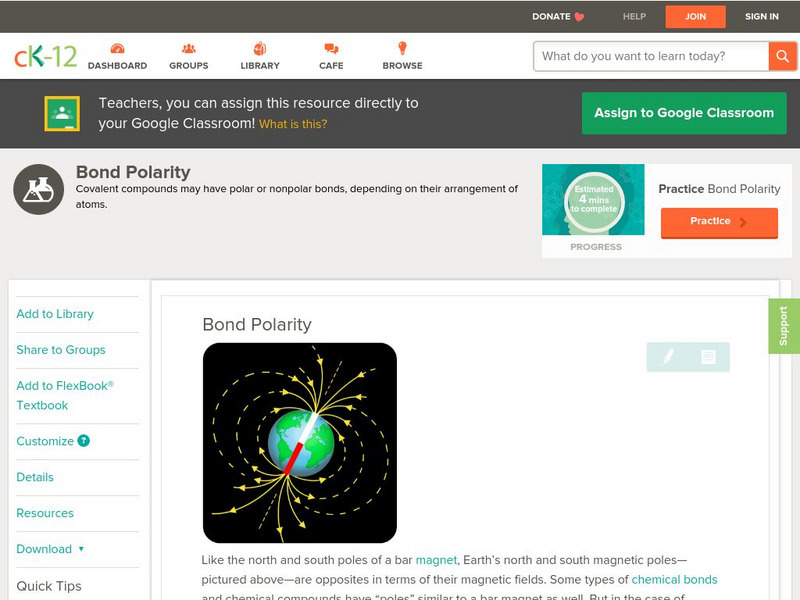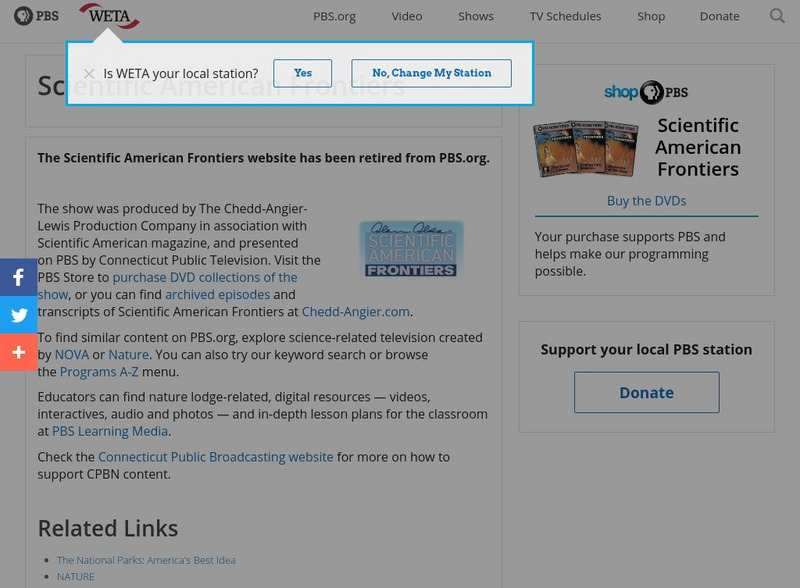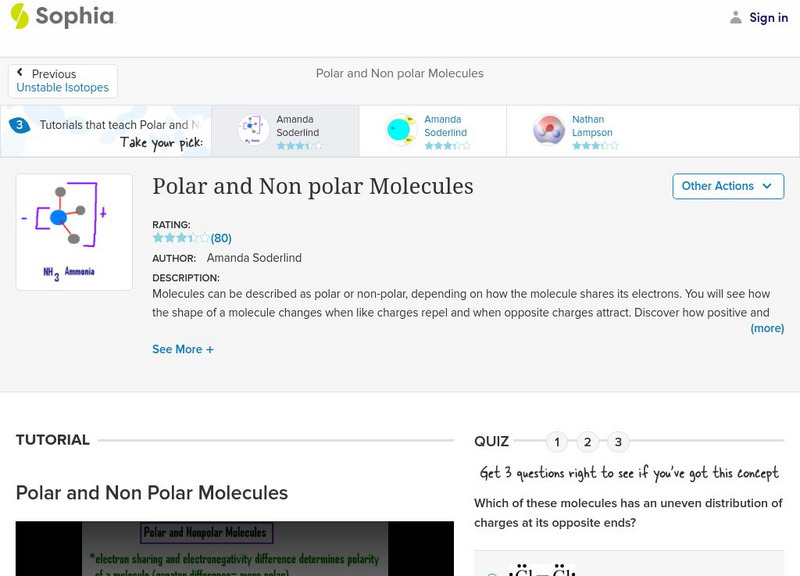CK-12 Foundation
Ck 12: Physical Science: Bond Polarity
[Free Registration/Login may be required to access all resource tools.] Polarity and covalent bonds.
World Wildlife Fund for Nature
World Wildlife Fund: Polar Bears
This resource offers detailed information on polar bears.
Concord Consortium
Concord Consortium: Protein Folding
Generate all polar, all nonpolar, or random proteins and observe how the protein folds in response to these molecular properties. Explore how the potential energy of the system changes over time to draw conclusions about how proteins...
Concord Consortium
Concord Consortium: Oil and Water
Mix polar and nonpolar molecules together and observe changes in potential energy.
Math Open Reference
Math Open Reference: Arc Length
Explore arc lengths with this handy reference guide. Provides a detailed definition, examples, and an animation that enhances further explanation. Includes links to related topics.
Concord Consortium
Concord Consortium: Comparing Potential Energy of Bond
Explore the change in potential energy when molecules are separated from each other or broken apart.
Concord Consortium
Concord Consortium: Comparing Attractive Forces Between Molecules
Simulations that explore different attractive forces between polar and non polar molecules.
PBS
Pbs Teachers: Going to Extremes: Frozen Alive
Explore survival strategies of animals in freezing climates. Investigate the role of glucose (sugar solution) when used as an antifreeze and the relationship between temperature and metabolism.
Other
Slu: Graphing Polar Equations Lesson Plan
A lesson plan for graphing polar equations. The young scholars work in groups to graph groups of polar equations and answer questions concerning these classic curves. After discussing the answers, the students are then required to...
Sophia Learning
Sophia: Polar and Non Polar Molecules: Lesson 2
This lesson will introduce polar and non-polar molecules, explaining their location, charge, and mass. It is 2 of 3 in the series titled "Polar and Non polar Molecules."
Sophia Learning
Sophia: Polar and Non Polar Molecules: Lesson 3
This lesson will introduce polar and non-polar molecules, explaining their location, charge, and mass. It is 3 of 3 in the series titled "Polar and Non polar Molecules."
Sophia Learning
Sophia: Characteristics of Chemical Bonds: Lesson 2
This lesson will present the basic properties and characteristics of chemical bonds. It is 2 of 4 in the series titled "Characteristics of Chemical Bonds."
Sophia Learning
Sophia: Characteristics of Chemical Bonds: Lesson 4
This lesson will present the basic properties and characteristics of chemical bonds. It is 4 of 4 in the series titled "Characteristics of Chemical Bonds."
Educaplus (Jesús Peñas Cano)
Educaplus: Polaridad De Los Enlaces [In Spanish]
Test your knowledge by sorting the links from the lowest to greatest polarity.
ClassFlow
Class Flow: Ecosystems
[Free Registration/Login Required] This flipchart explores the different ecosystems of the world, enhanced by embedded videos showing both the landscape and the plants and animals that can be found there.
Discovery Education
Discovery Education: Habitats of the World
This site has a lesson to use to start a unit on biomes and animal habitats. This plan incorporates grasslands, temperate forests, tropical rainforests, deserts, polar ice regions, and tidepools.
Frostburg State University
General Chemistry: Why Oh, Nh, and Fh Bonds Are Polar
Frostburg State University provides a brief explanation to the question of why small hydrogen molecules, such as OH, NH, and FH, are very polar.
National Earth Science Teachers Association
Windows to the Universe: Warming of the Polar Regions
Learn about the climate in the Polar regions and how it is affected by global warming. Links to related material.
Other
University of Texas Dallas: Electron Appetites
The first section of this lecture on polarity and electronegativity discusses what polar covalent bonds are by using carbon dioxide as an example.











![Educaplus: Polaridad De Los Enlaces [In Spanish] Unknown Type Educaplus: Polaridad De Los Enlaces [In Spanish] Unknown Type](https://content.lessonplanet.com/knovation/original/180051-fd27cf1353791aa3603432e82287e753.jpg?1661774243)


